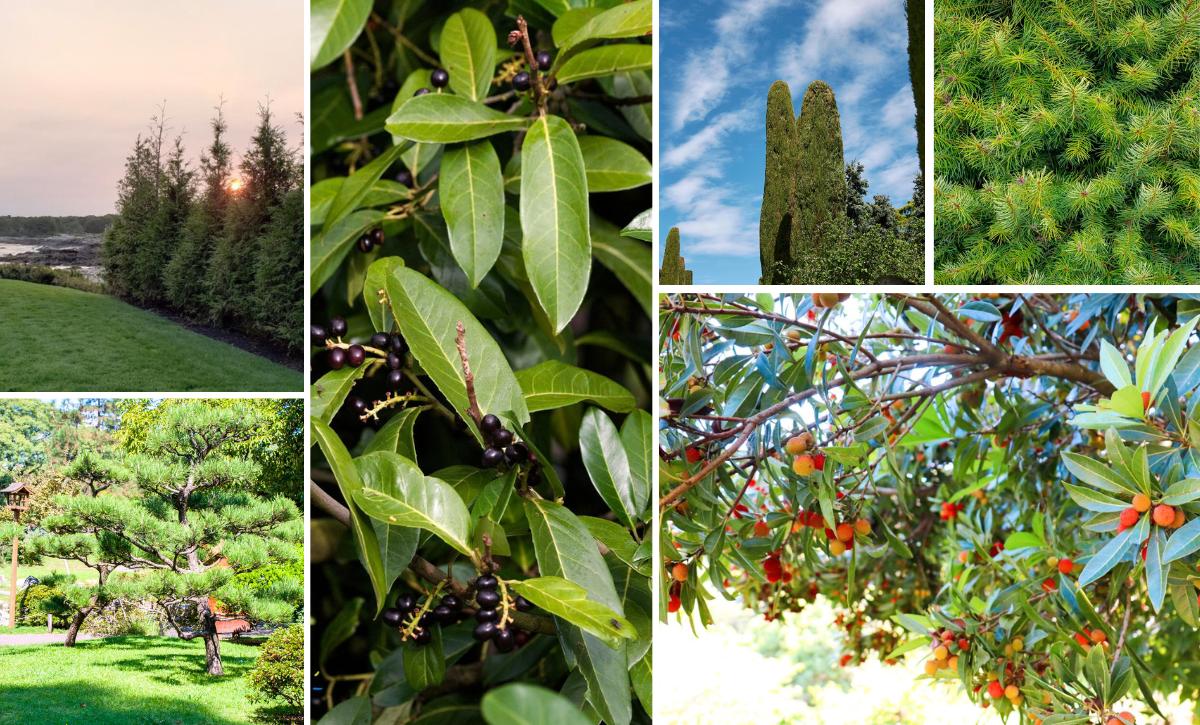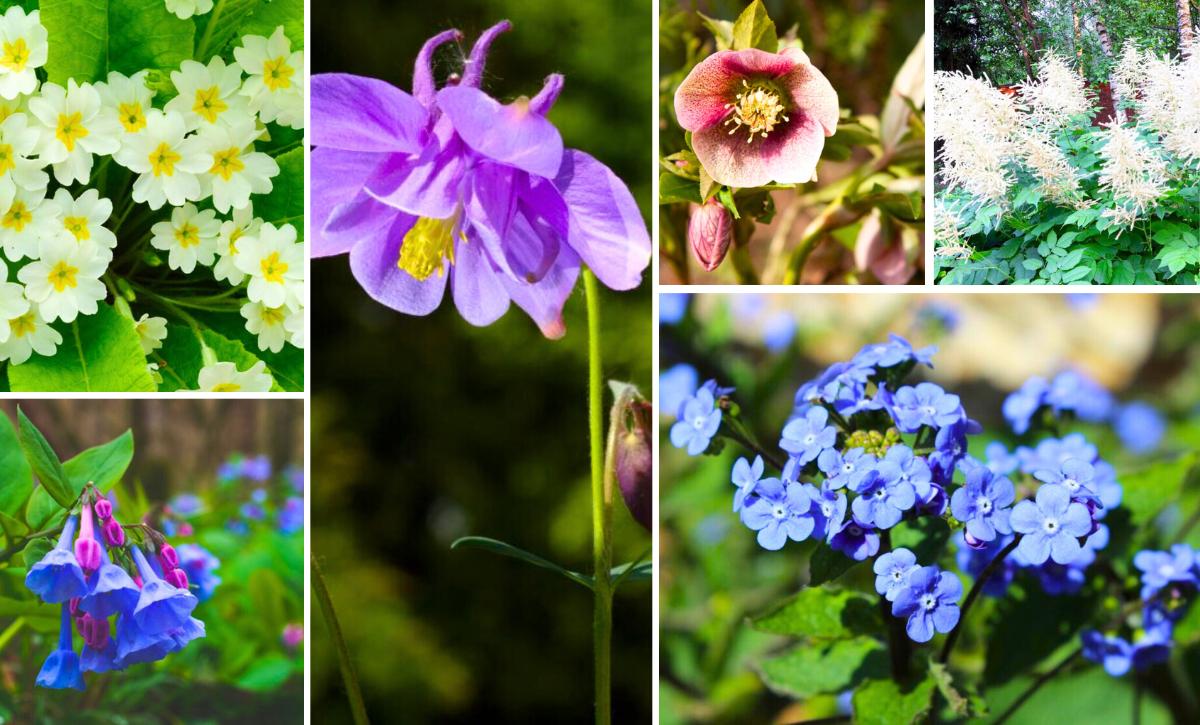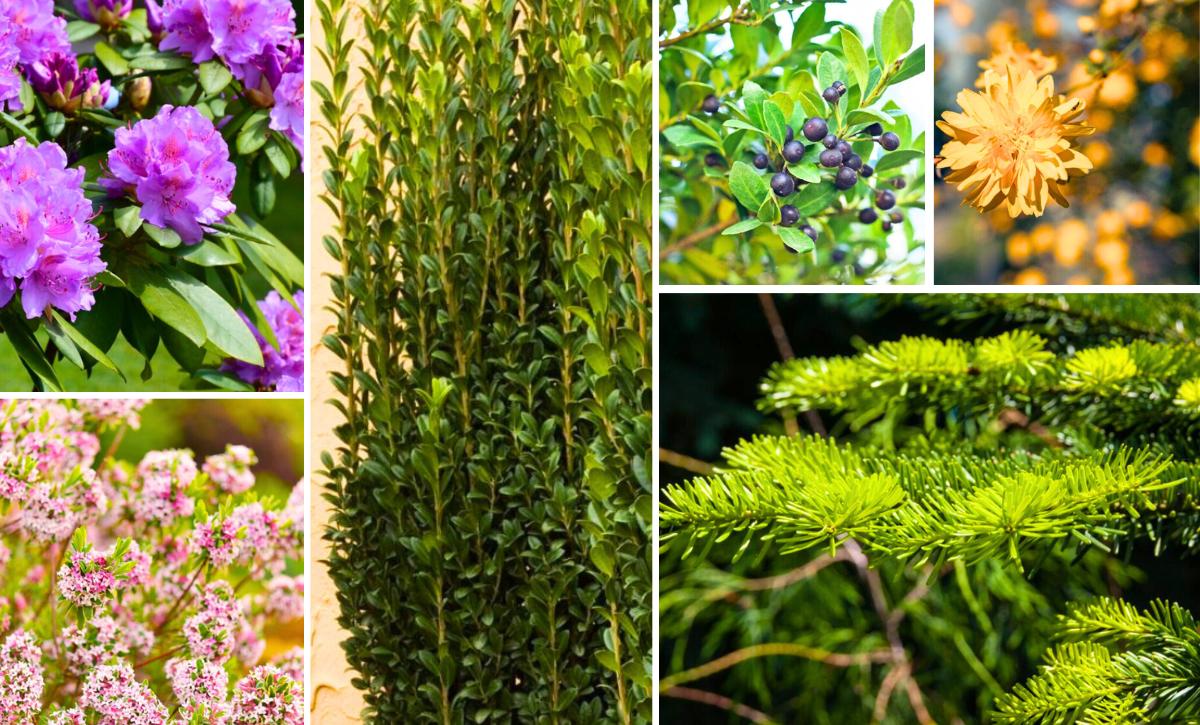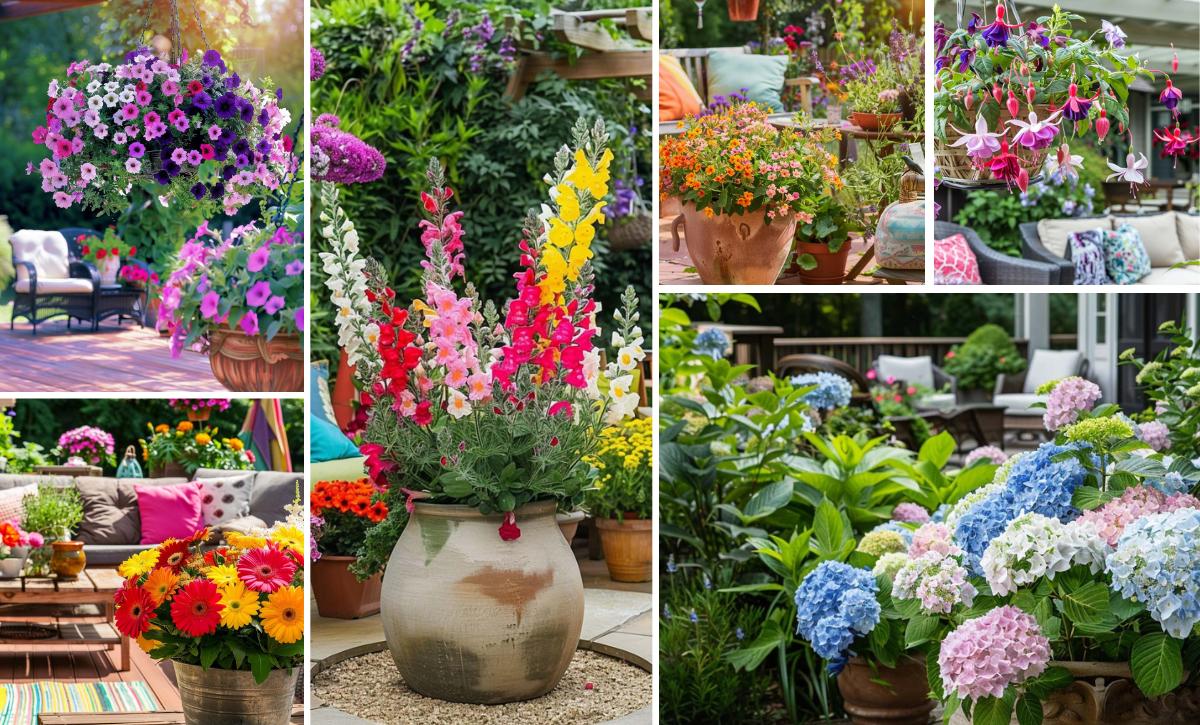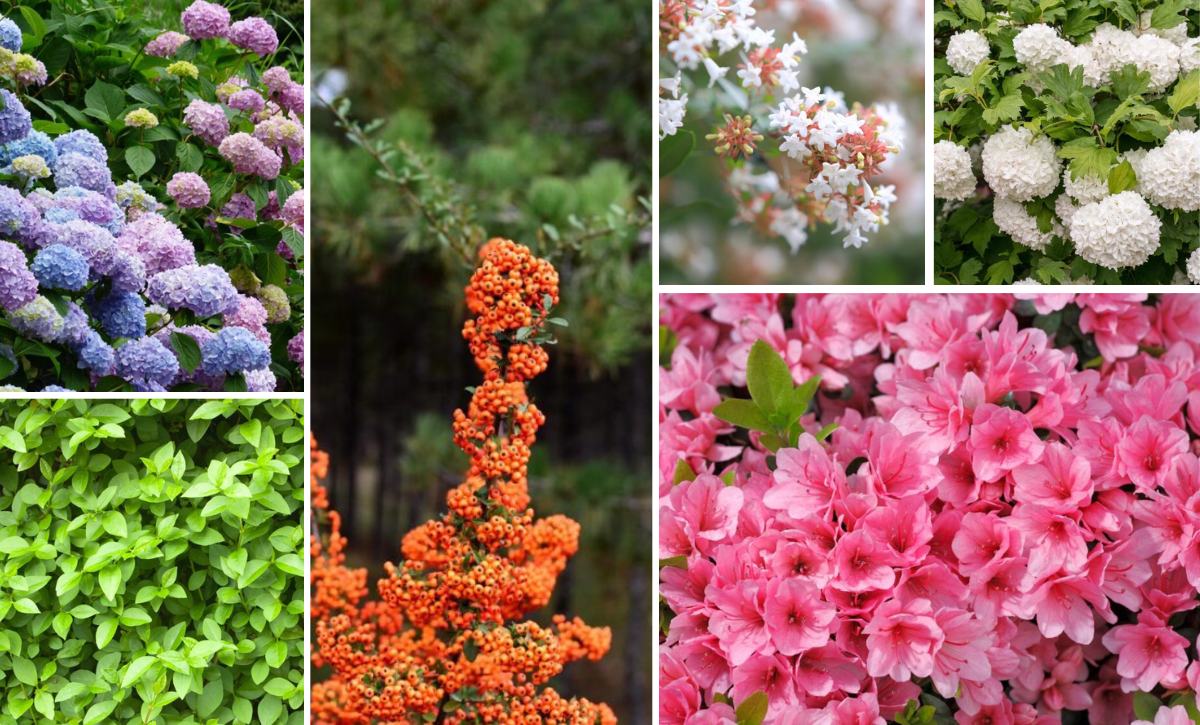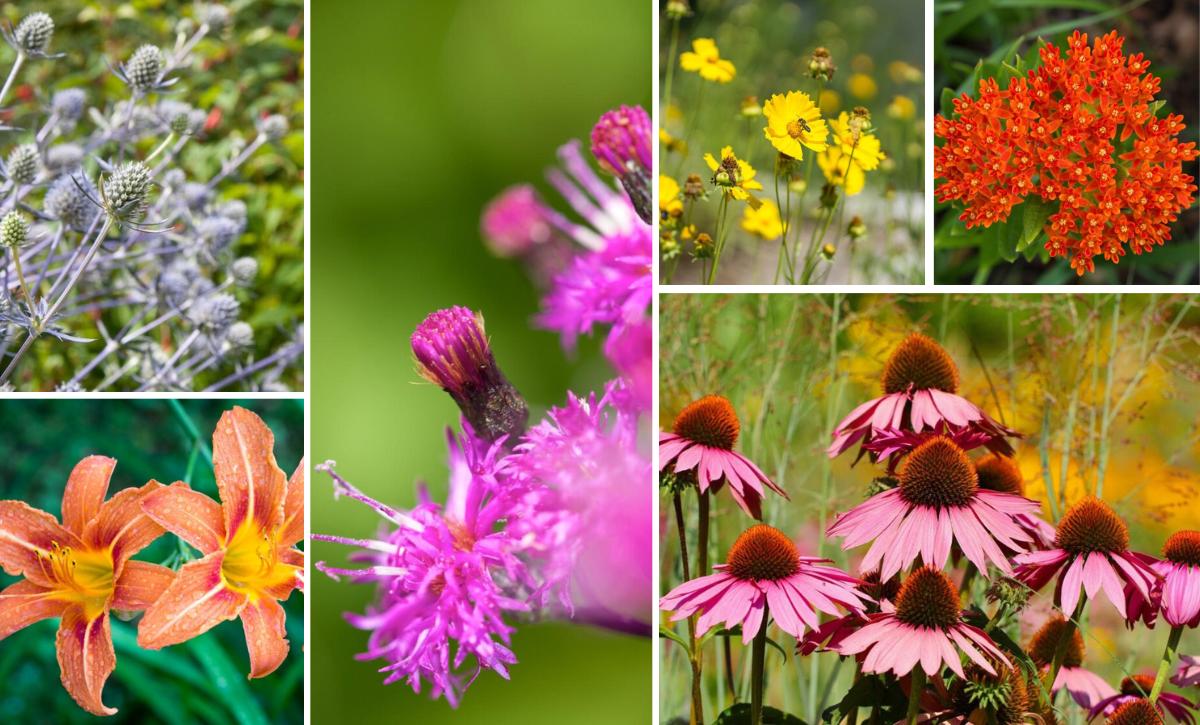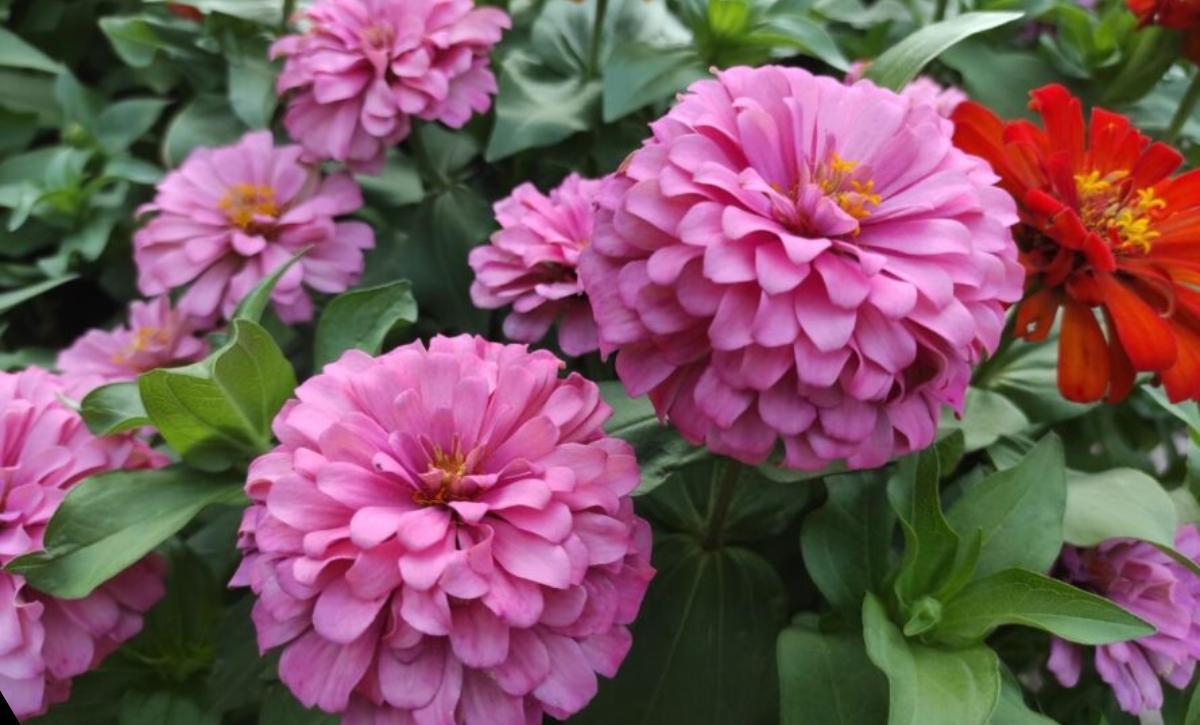Lemons are usually harvested when they are green and unripe. Do you know why? Well, it’s because it is much easier to transport unripe lemons, especially if it’s a long-distance journey. Otherwise, fully ripe lemons would probably rot since they are too soft to travel.
If you have lemon trees in your garden, there’s no harm in waiting for them to turn yellow before you can harvest them. However, what if most of your lemons stay green and unripe when their time for harvesting is almost due? What do you do then?
Today we will discuss why your green lemons are not turning yellow, so keep reading to find out the answer!
Why Green Lemons Won’t Turn Yellow
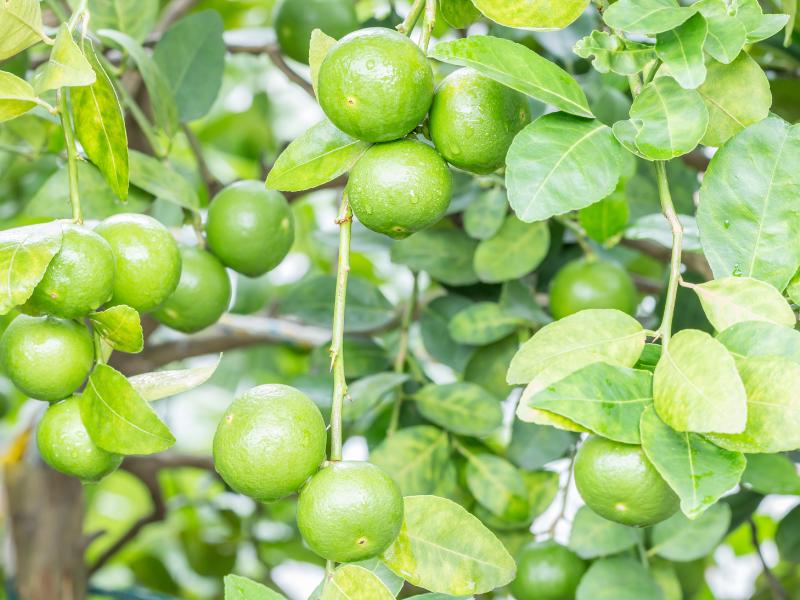
Your plant’s growth depends on numerous factors, including watering, soil type, sunlight, and so on.
We all yearn for a fresh glass of lemonade made from our lemons in the garden, but caring for these plants can be complex.
Below are 8 reasons why lemons stay green and unripe.
1. Lack of Enough Sunlight
Generally, all citrus trees need enough sunlight throughout the day. This is also the case for your lemon tree as well!
Chlorophyll is the main reason why citrus fruits are usually green when unripe. As they mature, however, the green color is replaced with anthocyanin, which depicts the yellow pigment of ripe lemons.
So, if you’re past your harvesting time and there are still some unripe lemons in your garden, the problem might be a lack of enough sunshine. Avoid planting your lemon trees close to each other since they will block sunlight from one another.
2. Lemons Take Time to Mature
Most of us plant seeds, look after our plants, and we will have fresh new fruits in a few months. When it comes to lemon trees, this is genuinely not the case.
Lemon trees take at least nine months before their fruits are fully mature and ripe. You need to have a lot of patience and allow them to grow and develop as you care for them, of course!
Many people are unaware of this and will fault their trees for failing to produce ripe fruits, but all you have to do is wait!
3. Lack of Proper Air Circulation
Just like any living thing, trees need air to grow and survive. If you plan on growing your lemon trees indoors, this might be a problem since it’s very difficult for your trees to get the required air circulation.
Don’t be discouraged, though. There are varieties, such as the meyer lemon tree, which you can grow indoors. Ensure you provide your tree with enough artificial sunlight and place it in a well-ventilated room to encourage growth and development.
4. Unfavorable Weather Conditions
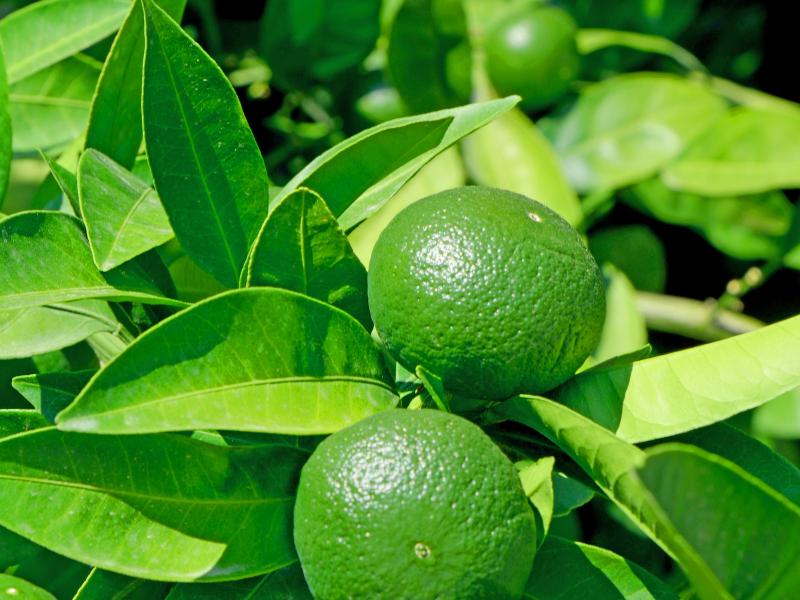
Most citrus trees are susceptible to temperature changes. Lemon trees flourish in temperatures ranging from 77-78°F, so anything above or below can inhibit their growth.
Lemon trees can also tolerate limited cool weather. However, they go dormant when the temperature falls below 50°F. Temperatures below 28°F would result in the overall destruction of your lemon tree.
On the other hand, temperatures above 105°F would be too much for your tree to handle, and the resulting effect would be fruits dropping off.
5. Lack of Nutrients
Nutrients in the soil are very vital for your plant’s growth. To enjoy fruity, yellow lemons, you must ensure your plants get the required nutrients!
Normally, the first thing you ought to do is fertilize your trees. However, your garden may still have green lemons even after fertilizing.
In that case, the problem might be placing trees too close to each other. This makes them compete for nutrients, and there needs to be more for every tree.
6. Unfitting Soil
Lemon trees flourish in well-draining soil. However, this type of medium favors growth and development more, not necessarily the yellowing of fruits or the production of lemons.
A well-draining medium will also eliminate moisture build-up in your soil, which could lead to root rot. Keep your plants away from high chalice and heavy salty and clay soils since they will interfere with the overall growth of your tree.
7. Inadequate Watering
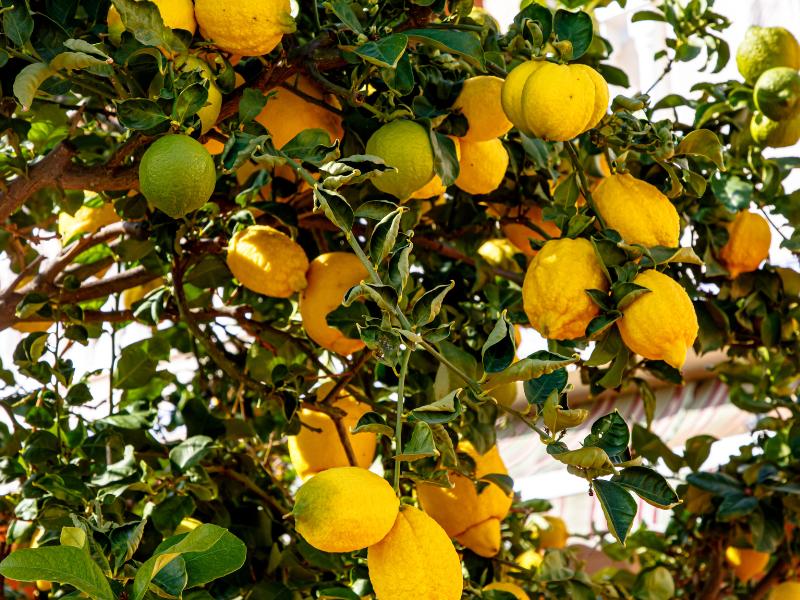
Lemon trees are not drought-tolerant at all! Leaving your lemon trees without water will leave your garden full of green lemons and mature lemons that are absolutely dry and juiceless – all your work would have been for nothing!
This goes for all citrus fruits – grapefruits or lemons, you need to water them regularly. Other factors to consider regarding watering are the size of the tree, the type of soil, and weather conditions.
Curling lemon tree leaves are usually caused by watering problems.
8. Pests and Diseases
This is a more obvious one, and yes! Your lemons may be turning yellow because of pests and diseases.
Some of the pests include citrus bud mites and aphids. The most feared citrus pests are brown soft scales since they are very hard to detect.
Diseases are also a nightmare for your lemon trees. Citrus canker, a disease caused by a bacteria known as Xanthomonas axonopodis, is one of the most dangerous diseases for lemon trees.
It affects the bark, fruits, and leaves of the tree. The disease uses insects or wind to spread to other trees and infect them.
Some other diseases, such as root rot and melanosa, cause harm only to fruits, making them rot or drop early. Melanosa results from a bacteria called Diaporthe citri, and it attacks the fruits of an old citrus tree.
Root rot is found in wet environments and is caused by the fungus Phytophthora genus. That’s why you should use a well-draining medium!
More Info Regarding Lemons
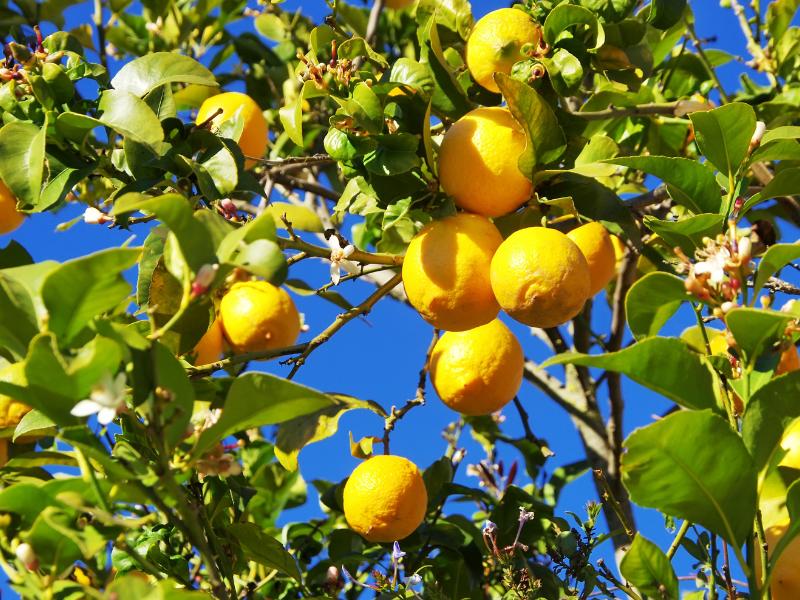
Lemons are citrus fruits made from the crossing of female oranges and male citrons and a dash of sour taste.
Lemons will give you all sorts of minerals and vitamins! Ever wondered why people use their peels in desserts and meals? That’s because they’re filled with calcium which can improve bone health. A gram of lemon is equal to 30mg of vitamin C!
Lemon trees are a great way to add color to your home or garden. The most common one is the Eureka lemon since it can grow all year round. Below is some general information about it:
| Family: | Rutaceae |
| Botanical Name: | Citrus limon ‘Eureka’ |
| Common Name: | Lemon |
| Habit: | Spreading |
| Soil Texture: | Sand, Loam |
| Landscape: | Hills, Footslopes, Plains, 2nd line coast |
| pH: | Neutral, Alkaline, Acidic |
| Supplementary Watering: | Moderate |
| Flowering Time: | Summer, Spring |
| Flower Type: | Open-petalled |
| Flower Color: | White |
| Foliage: | Dark-green |
| Ornamental/Purpose: | Fruit/Food |
| Trunk: | Smooth |
| Size: | Small (Around 7m) |
Taking Care of a Lemon Tree
Light Requirements
Many citrus species need direct sunlight for fruit production and optimal growth. For lemons they need at least eight hours of sunlight during the day for them to make their juicy lemons.
Lemons don’t necessarily turn yellow due to sunlight. Their yellowing is a result of a pigment known as anthocyanin. This same antioxidant helps us enjoy the numerous health benefits of lemon fruits!
Temperature Requirements
Full-grown lemon trees flourish in subtropical and tropical climates, in temperatures ranging from 77-88℉. Extremely high temperatures will interfere with photosynthesis, leading to a dormant tree that doesn’t produce fruits.
You should also note that temperature fluctuations are also a threat to your lemon trees. This is particularly dangerous for developing trees since you might end up with a garden full of green lemons,
Fertilizer Requirements
Fertilizers are very essential for lemon trees and their fruit production, especially during the growing season. They need nutrients like boron, copper, nitrogen, zinc, and manganese.
Apply a lemon fertilizer once every three months as your tree grows. Resort to a liquid fertilizer once every other week after that. This will be enough for your tree to produce those juicy lemons you yearn for!
Soil Requirements
A well-draining medium is very crucial for lemon production. One of the reasons you may have green lemons all over your garden is inadequate soil.
Plant your lemon tree in loam or sandy soil – this tree is pretty picky. Ensure you test your soil for pH before planting to achieve optimum growth; ideal pH levels should be between 5.5-6.5. Also, lemon trees thrive in moist soil, so don’t forget!
Water Requirements
As mentioned earlier, citrus varieties love water and need even and constant watering. Water your tree thoroughly at least once a week. Ensure your soil is well-draining, or else you will have to deal with root rot due to too much water.
If you rigorously water your lemon tree, it can go up to a week without needing any watering again. However, this doesn’t apply to indoor plants. In this case, wait for the soil to completely dry out before watering your tree.
Pests and Diseases
There are various insecticides and pesticides you can use to battle pests and diseases on your lemon trees. Citrus canker disease, which we termed one of the most dangerous ones, can be dealt with by a copper-based liquid fungicide. You can apply it to prevent the disease too!
For pest infestation, the best option is to apply neem oil before going for an organic alternative afterward. If this doesn’t solve your issue, however, then spray your tree with a combination of insecticidal soap and water or apply a specific pesticide.
Pruning
Pruning is one of the essential things you need to master for you to have healthy trees and abundant fruit production. You need to regularly prune sprouts that grow on mature lemon trees and any damaged branches and dead wood.
This also applies to young growing trees – remove their sprouts regularly and any broken or weak limbs.
When To Pick Lemons
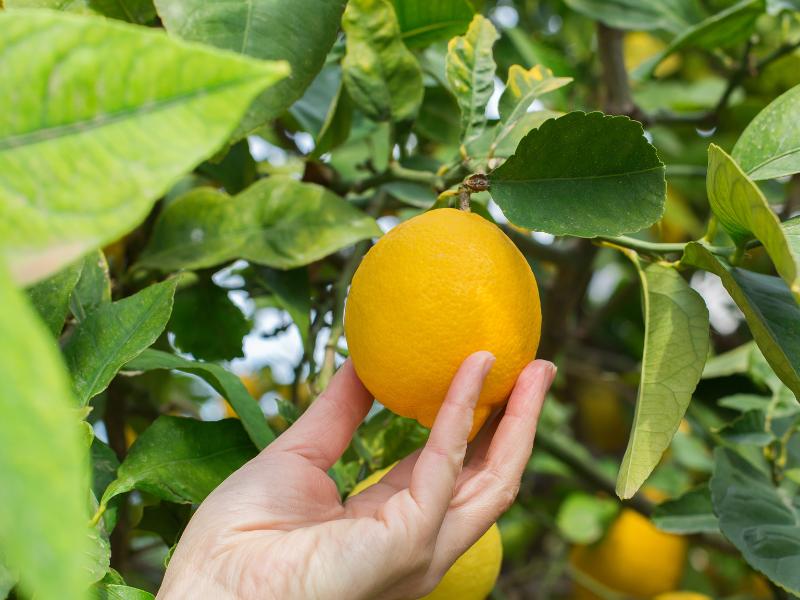
Determining the best time to harvest lemons can be pretty tricky since it’s not easy to pinpoint the exact time of the year they will ripen.
Now, you’ve taken good care of your lemon trees, and they’re producing fruits abundantly. However, there’s one more issue; they have different ripeness levels. This adds more difficulties in determining your harvest time.
Nonetheless, here are some tricks and tips to aid you in distinguishing unripe from ripe lemons:
- You can look at the fruits’ color. Green lemons usually indicate unripe fruits that are still to develop. Yellow lemons are ripe fruits.
- Size can also help you determine harvest time. If you have lemons that are about two inches, you probably need to get ready to harvest them.
- In case you harvested both green and yellow lemons, here’s a cool trick! The green lemons can mature and turn yellow by placing them in a sunny location!
- Usually, lemons mature after about nine months. This is after their flower blossoms.
How do I pick lemons?
The same way you would pick apples. Perform a simple twirl using your hands to break the fruit free from the branch. You can always resort to pruning shears if you cannot pick the fruits by hand.
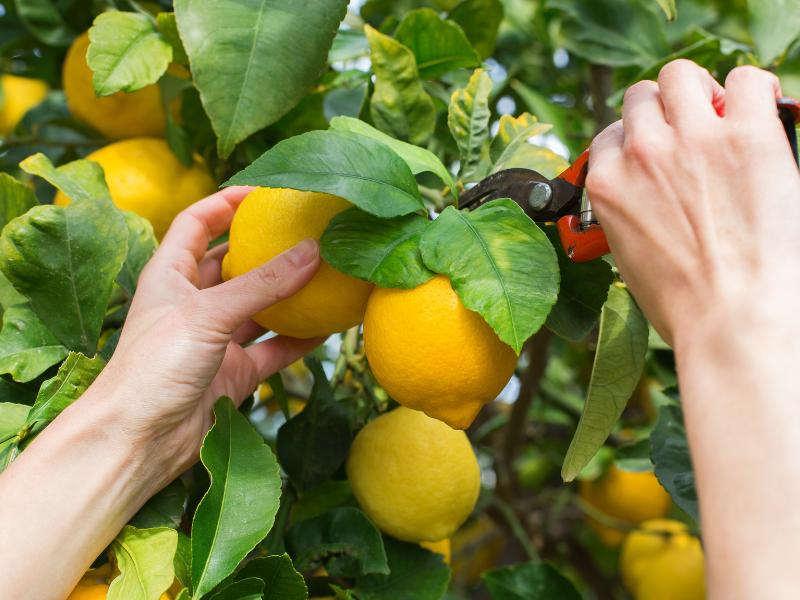
How To Store Lemons
The best way to store lemons is in the fridge. Placing them in pretty bowls to improve your decor may be a tempting idea, but they will only dry out and rot.
Freezing your lemons is also an option, especially if you’ve harvested a lot of them. You can either slice them or store them in whole, and they will last for a long time.
Green Lime vs Green Lemons
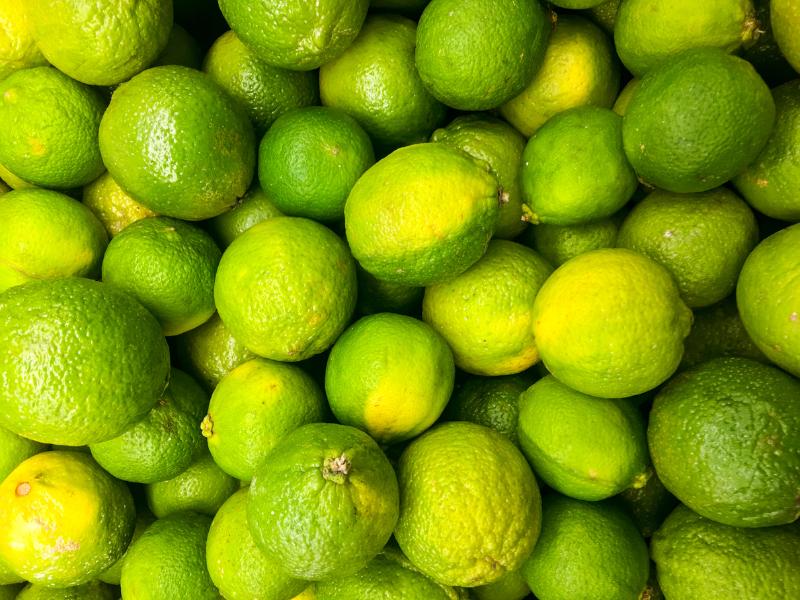
Limes and lemons are usually mistaken for one another but aren’t the same species. They only share a common ancestor. Lemons are scientifically known as Citrus limons, while lime is referred to as Citrus aurantifolia.
When limes are yellow, it means they’re overripe and were not picked on time. They completely lose their taste, and I wouldn’t recommend them in that state.
Lemons have a somewhat sour taste compared to limes, which have a bitter taste. They also have different health benefits and nutritional values, but that’s of little importance since they’re unique foods that we should have in our diets!
Frequently Asked Questions
1. Is it okay to eat green lemons?
Yes, you can eat green lemons. Even though the fruit is not fully ripened, it won’t cause any problems when ingested. They only have a bit of a sour taste than yellow lemons.
Yellow lemons are rich in the antioxidant anthocyanin, which green lemons don’t possess. Anthocyanin can neutralize heart diseases, reduce inflammation, and prevent cancer!
2. Are there benefits of eating green lemons?
Lemons are rich in antioxidants, minerals, vitamins, and fiber, so yes! There are many benefits you can get from them.
Eating lemons lowers the risk of a stroke and can lower your cholesterol levels and blood pressure. Lemon juice contains citric acid, which can defend you from anemia and prevent the formation of kidney stones.
Lemons can also aid in weight loss and improve digestive functions. So yeah! Don’t forget to drink a glass of lemon juice every morning!
3. Can I make lemonade with green lemons?
The recipe is the same whether you have green lemons or maybe limes that you thought were green lemons. However, it’s called a limeade when you use limes.
Ingredients:
- 2 lemons or lime, seeds removed and quartered
- 8 cups of cold water
- ½ cup of sugar
- Ice cubes as you desire
- Lime/lemon slices to garnish
Instructions:
- Put the quartered lemons or limes, sugar, and four cups of water in a blender.
- Blend until all the ingredients have been totally mashed. It should appear pale in color and somewhat frothy.
- Take the lemonade out of the strainer and add the other four cups of water.
- You can serve it with ice or without, depending on one’s preference.
Final Remarks
There are quite a few reasons that could explain your lemon trees producing only green lemons. Your trees can be too young and unable to develop mature fruits, or they aren’t getting enough water or sunlight.
Keep in mind that nutrients are very essential for lemon tree fruit production. In case plants and fertilizers are not the issue, then maybe you placed the trees too close to each other, and hence they’re competing for nutrients.
Whichever problem you face, I’m sure you will find the right solution!

Lemons are super beneficial fruits you should add to your desserts and meals, even if you’re not a fan.
Well, that’s all we have for you today! Have a good one!

